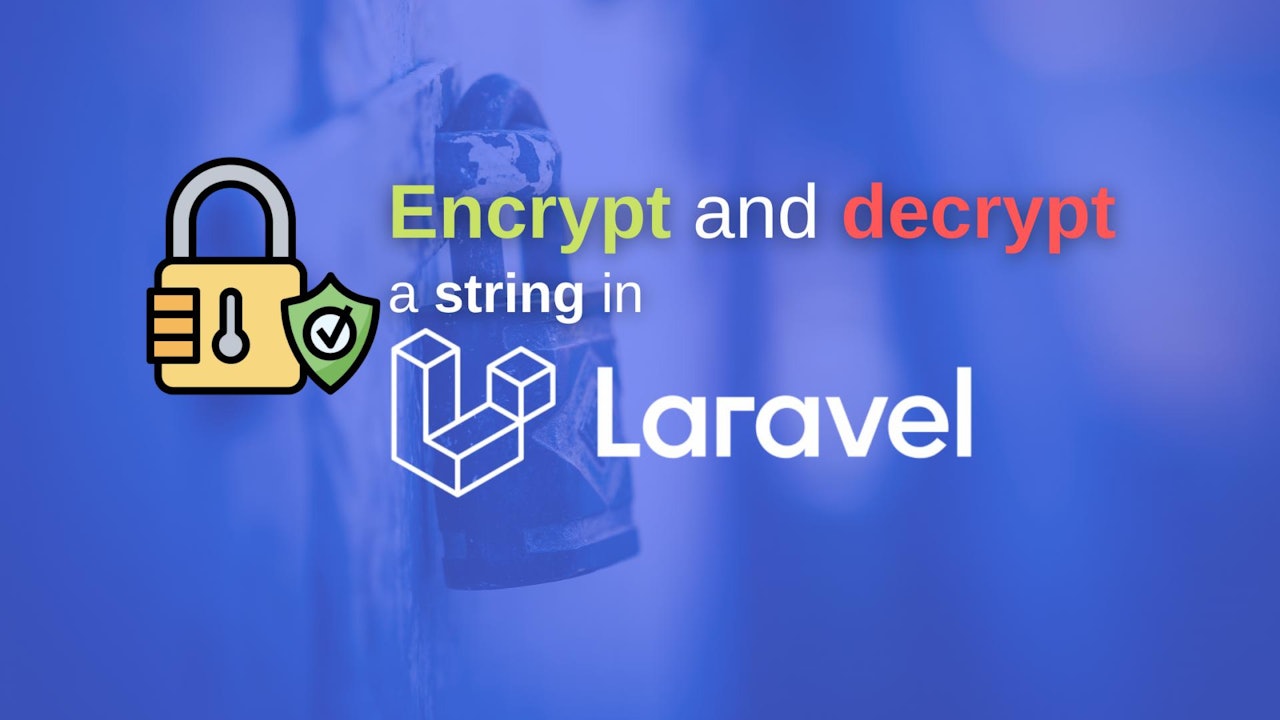Introduction
Encryption is the process of encoding information so that it can not be understood or intercepted.
Encryption has been used long ago before computers were invented; actually, the first known evidence dates back to 1900 BC in Egypt.
Another very popular encryption technique is the Caesar cipher. It is one of the simplest techniques, and how it works is each letter of the text is replaced by a specific number of positions down the alphabet.
Laravel, on the other side, provides out-of-the-box encryption, which uses OpenSSL to provide AES-256 encryption so that you don't really have to come up with your own encryption techniques.
In this tutorial, you will learn how to use the Laravel encryption to encrypt text!
Prerequisites
Before you start, you would need to have a Laravel application up and running.
I will be using a DigitalOcean Ubuntu Droplet for this demo. If you wish, you can use my affiliate code to get free $100 DigitalOcean credit to spin up your own servers!
If you do not have that yet, you can follow the steps from this tutorial on how to do that:
Or you could use this awesome script to do the installation:
 View Website
View Website
 View Website
View Website
 View Website
View Website
App Key Configuration
Before you get started, you need to make sure that you have an App Key generated.
If you do not have a key already generated, to do that, you can run the following command:
php artisan key:generate
The Laravel encryption will still work without a key, but the encrypted values might be insecure.
Creating a Route
Now that we have our App Key ready let's go ahead and create two routes, one for testing the Laravel encryption and one for testing the Laravel decryption.
To do that, open the routes/web.php file and add the following:
Route::get('encrypt', EncryptionController@encrypt');
Route::get('decrypt', EncryptionController@decrypt');
The first route is the /encrypt route, which will generate an encrypted string for us, and the second one will decrypt that string.
With that, let's create the EncryptionController controller!
Creating a Controller
For this example, let's create a new controller called EncryptionController:
php artisan make:controller EncryptionController
This will create a new controller at: app/Http/Controllers/EncryptionController.php.
Next, open that file in your text editor and first add the Crypt facade:
use Illuminate\Support\Facades\Crypt;
Then let's create two new public methods: one for encrypting a string and one for decrypting that same string called encrypt and decrypt.
Ecryption method
Let's start with a simple Encryption method which would encrypt a hardcoded string for us:
public function encrypt()
{
$encrypted = Crypt::encryptString('Hello DevDojo');
print_r($encrypted);
}
Rundown of the method:
public function encrypt(): first we define the methodCrypt::encryptString('Hello DevDojo'): then using theCrypt::encryptString()static method we encrypt a simpleHello DevDojostringprint_r($encrypted);: finally, we would print out the encrypted string on the screen.
After that visit, the /encrypt URL via your browser and you will see an encrypted string similar to this one:
string(188) "eyJpdiI6ImxSdGhkeVg2VHlCNUs0citKT0V4NHc9PSIsInZhbHVlIjoiSEM5V0pVWURySnVabGlnenNwTDgzUT09IiwibWFjIjoiZTJlYWVhYmI2OTJmZWJkZWVhOTg3Nzc1ZTQwNDBlNmI3ODIzZTY5YTgwZGM3N2YwYTRmYTEwYmJiYmNjZmE2NiJ9"
Note down this string and go back to your text editor to prepare the decrypt method!
Decryption method
Then create a new public method called decrypt:
public function decrypt()
{
$decrypt= Crypt::decryptString('your_encrypted_string_here');
print_r($decrypt);
}
Note:
Make sure to change the
your_encrypted_string_herewith your actual encoded string that you've got from the last step
Similar to the Encrypt method, we are again using the Crypt faced with the decryptString static method to decrypt the string!
Then this time visits the /decrypt URL in your browser, and you will see the decrypted Hello DevDojo message!
Of course, the above example is just showing Crypt functionality. In a real-life scenario, you would get most likely to get your string from a POST request or an API call for example.
Conclusion
For more information on how to use Laravel Encryption, make sure to check out the official documentation here:
https://laravel.com/docs/8.x/encryption
If you are working as a DevOps engineer, check out this DevOps Scorecard and evaluate your DevOps skills across 8 key areas and discover your strengths and growth opportunities
I hope that this helps!


Comments (0)